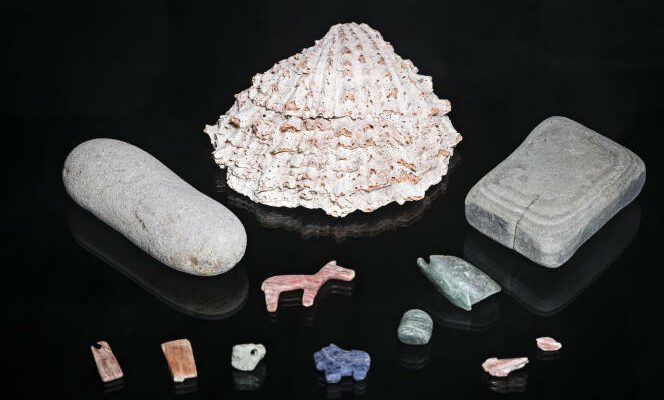The discoveries made by an international team of diving archaeologists in recent years have made it possible to refocus Lake Titicaca, between Bolivia and Peru, as a major socio-economic place for pre-Hispanic populations, in particular for the Tiwanaku civilization, whose apogee dates between 800 and 1150 AD. “These cultures were not only cultures of the land, turned towards agro-pastoralism, as they are usually known [notamment avec l’importance de la domestication des camélidés], they were also lacustrine cultures, with navigational practices; an aspect that there was not in any testimony until then”, indicates the Belgian researcher Christophe Delaere, co-director of the archeology mission Titicaca Project.
“The lake was an ultra-dynamic place. We realize that it was a small South American nostrum pond »explains the archaeologist. By excavating the littoral zone, the researchers indeed found an industrial pole which does not exist anywhere else in the terrestrial sites around. “We unearthed stone-cutting workshops, with blade hunters [sorte de burin], retractor; wool workshops; tanneries, with their leather scrapers which, as in medieval Europe, were on the banks of rivers and lakes; or textile workshops. There is a whole pole of activity that was until now undocumented”, details Christophe Delaere. Also, the inhabitants of the lake exploited the totora, a giant rush present in the lake, for the roofs of the houses, went duck hunting, went fishing, sailed…
“Great network of exchanges”
These cultures were in constant contact with others from the ancient times of the Tiwanaku. “We have discovered, particularly in the minor lake [plus à l’est], evidence of contact with the Amazon rainforest, says Marcial Medina Huanca, the Bolivian co-director of the excavations. On ceramics, for example, we find zoomorphic motifs: monkeys, snakes, feline heads. This teaches us that these societies were not isolated; the unearthed artefacts testify to the formidable network of exchanges that existed at that time. »
Traders then traveled long distances. “For example, we discovered the presence of finely worked jade stones from the Ayacucho region [Andes centrales péruviennes] which is hundreds of kilometers from Titicaca, lapis lazuli from Chile, or even marine shells of the genus spondylusfrom Ecuador, indicates Marcial Medina Huanca. All this constituted an exchange material for these civilizations. »
You have 16.06% of this article left to read. The following is for subscribers only.
